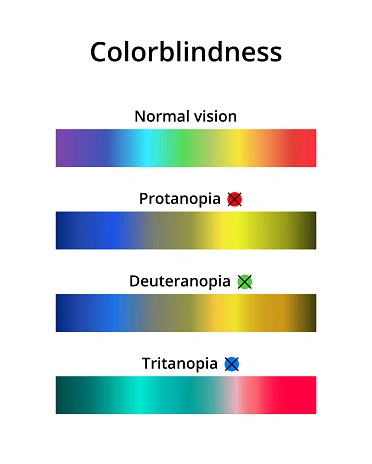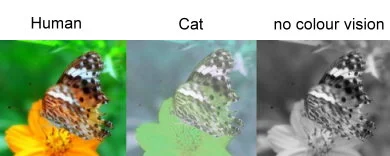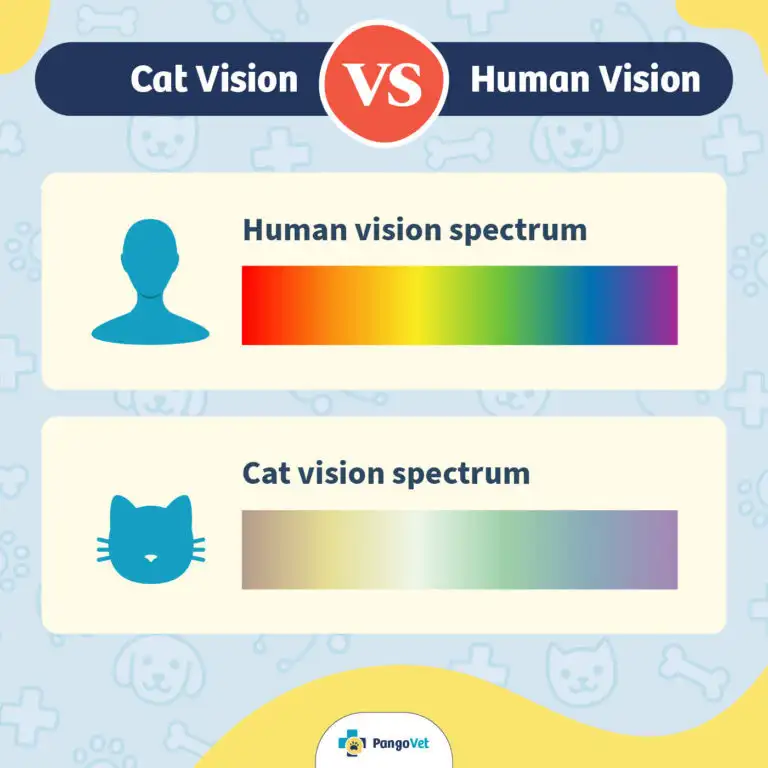Firstly, cats have a higher proportion of rods to cones when compared to human eyes, as well as a structure behind the retina called a tapetum lucidum, which reflects light back to their photoreceptors.
This means they are better able to see differences between dark and light than we are, and in general are estimated to be able to see in brightness conditions about 6 times dimmer than what humans can see in.
But the flipside to this is that, in general, they see less contrast between colors than we do.
EDIT: And they can more easily be blinded by bright lights.
(The tapetum lucidum is also what causes cats eyes to appear to shine or glow in low light conditions)
...
Secondly, cats are are dichromatic, they have very low sensitivity to what we call red, so their perception or color is probably something akin to protonanopia in humans, though not as extreme.

Cats basically percieve the world in what we would call muted tones of blues, yellows, greens and grays.

EDIT: Just found this spectrum comparison, its probably better:

...
Thirdly, cats visual range extends beyond the human visual range into UV. They can see all the way down to 320nm, human vision typically stops at about 400nm.
This is why cats are often transfixed, looking at things that... don't seem to be there. What they're looking at does exist, it's just that we can't see it.
This also means that they can see distinct color patterns in what we would basically just perceive as blue.
...
Finally, they also have a 200 degree field of view, compared to a human's 180, meaning they have superior peripheral vision.
Their vision is much more sensitive to motion than humans, but they are also what we would basically call nearsighted, somewhere between 20/100 and 20/200, unable to clearly see things far away.